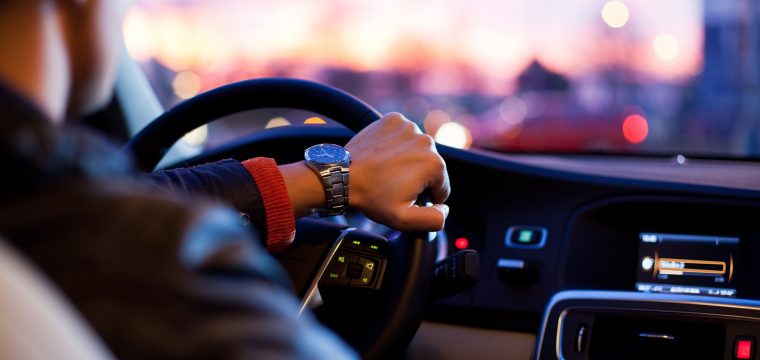
Image Source: Pixabay
With marijuana use becoming legal in several states, you may be tempted to think of it as harmless. However, it’s not a harmless drug and is indeed dangerous, particularly when combined with driving.
Just as it’s illegal to drink alcohol and drive, so is it illegal to use marijuana and drive. The truth is that marijuana has negative effects on drivers. It has caused accidents and ruined many lives.
This article will look at what those dangers are, including some statistics, and explore how we can educate children about the dangers of marijuana use.
Dangers of Drugged Driving
The dangers of drugged driving should be obvious. However, even though awareness of the problem is increasing, we should still brace ourselves for a drastic rise in drugged-driving incidences moving forward.
Drug-impaired driving, according to a study of crash data, is becoming nearly as common as alcohol-impaired driving. However, the nature of marijuana impairment is different than drunk driving.
According to the study referenced above, the effects of driving while high can include:
- Impairment for two to four hours after using
- Slower reaction times
- Reduced coordination and car-handling skills
- Greater chances of fatigue and distraction
Statistics from the Washington Traffic Safety Commission are interesting as well. The commission found that between 2013 and 2014 – after marijuana use was legalized – the number of fatal collisions for drivers who tested positive for marijuana increased by 50 percent. It’s becoming a problem on par with California’s drug problem.
Treat It Like It’s Dangerous
Law-enforcement agent Kyle Clark, writing a story for USA Today, says that we need to be more vigilant in getting out the right message: driving high is dangerous.
Clark says that when it comes to drunk-driving, that message has been clear for a long time and constantly shared through public safety campaigns. We now need to do the same thing with marijuana.
A new study by the Property Casualty Insurers Association of America shows that only 40 percent of Americans think that driving under the influence of marijuana is causing more accidents. Yet 91 percent said that driving under the influence is dangerous. Clark says that this indicates a vast disconnect between the problem and the consequences and will “lead to more deaths on the road.”
In addition to potentially causing injury and death, the financial consequences of traffic accidents stemming from driving under the influence can be steep. Medical debt, which may not go away even after an individual dies, can cause hardship on loved ones for years after the event. While the specific statutes in play vary by state, the statute of limitations doesn’t prevent medical debt collectors from pursuing debt.
According to the National Institute on Drug Abuse, marijuana is the drug most often found in the blood of drivers who were involved in an accident. There is a significant problem, according to Clark, and the solution begins at home with parents educating their children about the dangers of marijuana.
Importance of Educating Children
Many teens feel the need to smoke marijuana due to peer pressure or a need to fit in. There are many reasons why young people abuse drugs. However, the bigger problem might be how so few kids realize that driving and smoking is a problem.
A new survey by Liberty Mutual Insurance shows that one-third of teens think driving under the influence of marijuana is legal in states where recreational use is legal. This misperception, according to Mike Sample, driving safety expert and technical consultant at Liberty Mutual, will put lives in jeopardy.
In that same survey – involving 2,800 teens and 1,000 parents of teen drivers – 27 percent of parents also thought that driving under the influence was legal in those states. According to Sample, most people don’t associate the impaired effects of marijuana as they do for alcohol.
“It was eye-opening,” says Sample. “I think we spend so much time in our culture discussing the negative impacts of alcohol use that the teens aren’t hearing enough of the messaging from their parents about the perils of any type of impaired driving.”
Sample goes on to say that in our society, we’ve been getting DUI messages for years, and they’ve been loud and clear: A DUI is still a DUI, regardless of the substance.
A study by the Insurance Institute for Highway Safety, as reported by Forbes, also confirms that disparity is evident. They found that people’s attitudes were different for alcohol than they were for marijuana. However, there’s also some good news.
In that same study, when parents talked with their children about the dangers of smoking marijuana and driving, 80 percent of teens agree that smoking makes someone a worse driver. The problem is that there seems to be another disconnect, as 78 percent of parents have reported having this conversation with their teen driver, but only 53 percent of teen drivers say that this conversation has occurred.
Education is key, as letting your children know about the dangers of driving while under the influence, regardless of that influence, will help shape their perceptions of the problem. It’s a problem that could get out of hand in a hurry, like the drug crisis that Las Vegas schools are in the grips of.
At the end of the day, it’s important to remember that driving is a skilled action that requires your full attention. You can be cited for driving while being too tired. It’s illegal and dangerous to drive while on prescription medication. Take driving seriously and encourage others around you to do the same. It’s not about the legality of a specific substance, it’s about your reaction time, awareness of your surroundings, and ability to make important decisions in a quick, decisive manner.

Leave a Reply
You must be logged in to post a comment.